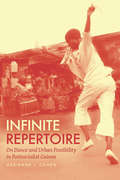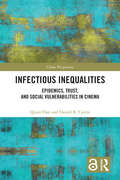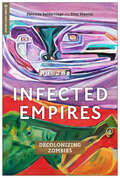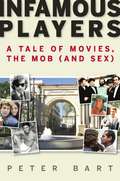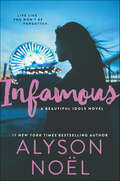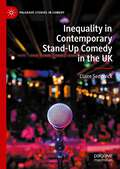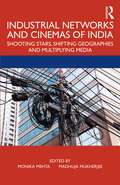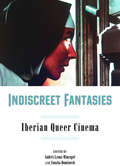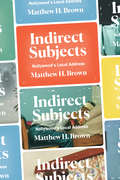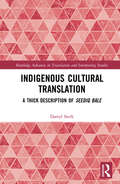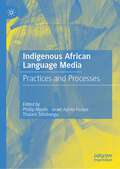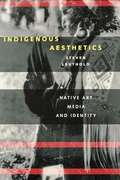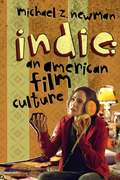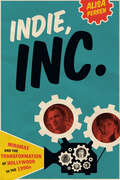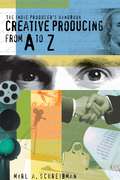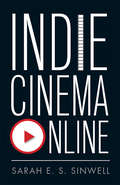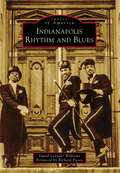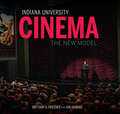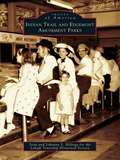- Table View
- List View
Infinite Repertoire: On Dance and Urban Possibility in Postsocialist Guinea
by Adrienne J. CohenIn Guinea’s capital city of Conakry, dance is everywhere. Most neighborhoods boast at least one dance troupe, and members of those troupes animate the city’s major rites of passage and social events. In Infinite Repertoire, Adrienne Cohen shows how dance became such a prominent—even infrastructural—feature of city life in Guinea, and tells a surprising story of the rise of creative practice under a political regime known for its authoritarianism and violent excesses. Guinea’s socialist state, which was in power from 1958 to 1984, used staged African dance or “ballet” strategically as a political tool, in part by tapping into indigenous conceptualizations of artisans as powerful figures capable of transforming the social fabric through their manipulation of vital energy. Far from dying with the socialist revolution, Guinean ballet continued to thrive in Conakry after economic liberalization in the 1980s, with its connection to transformative power retrofitted for a market economy and a rapidly expanding city. Infinite Repertoire follows young dancers and percussionists in Conakry as they invest in the present—using their bodies to build a creative urban environment and to perform and redefine social norms and political subjectivities passed down from the socialist generation before them. Cohen’s inventive ethnography weaves the political with the aesthetic, placing dance at the center of a story about dramatic political change and youthful resourcefulness in one of the least-studied cities on the African continent.
Infinite Repertoire: On Dance and Urban Possibility in Postsocialist Guinea
by Adrienne J. CohenIn Guinea’s capital city of Conakry, dance is everywhere. Most neighborhoods boast at least one dance troupe, and members of those troupes animate the city’s major rites of passage and social events. In Infinite Repertoire, Adrienne Cohen shows how dance became such a prominent—even infrastructural—feature of city life in Guinea, and tells a surprising story of the rise of creative practice under a political regime known for its authoritarianism and violent excesses. Guinea’s socialist state, which was in power from 1958 to 1984, used staged African dance or “ballet” strategically as a political tool, in part by tapping into indigenous conceptualizations of artisans as powerful figures capable of transforming the social fabric through their manipulation of vital energy. Far from dying with the socialist revolution, Guinean ballet continued to thrive in Conakry after economic liberalization in the 1980s, with its connection to transformative power retrofitted for a market economy and a rapidly expanding city. Infinite Repertoire follows young dancers and percussionists in Conakry as they invest in the present—using their bodies to build a creative urban environment and to perform and redefine social norms and political subjectivities passed down from the socialist generation before them. Cohen’s inventive ethnography weaves the political with the aesthetic, placing dance at the center of a story about dramatic political change and youthful resourcefulness in one of the least-studied cities on the African continent.
Infinite Repertoire: On Dance and Urban Possibility in Postsocialist Guinea
by Adrienne J. CohenIn Guinea’s capital city of Conakry, dance is everywhere. Most neighborhoods boast at least one dance troupe, and members of those troupes animate the city’s major rites of passage and social events. In Infinite Repertoire, Adrienne Cohen shows how dance became such a prominent—even infrastructural—feature of city life in Guinea, and tells a surprising story of the rise of creative practice under a political regime known for its authoritarianism and violent excesses. Guinea’s socialist state, which was in power from 1958 to 1984, used staged African dance or “ballet” strategically as a political tool, in part by tapping into indigenous conceptualizations of artisans as powerful figures capable of transforming the social fabric through their manipulation of vital energy. Far from dying with the socialist revolution, Guinean ballet continued to thrive in Conakry after economic liberalization in the 1980s, with its connection to transformative power retrofitted for a market economy and a rapidly expanding city. Infinite Repertoire follows young dancers and percussionists in Conakry as they invest in the present—using their bodies to build a creative urban environment and to perform and redefine social norms and political subjectivities passed down from the socialist generation before them. Cohen’s inventive ethnography weaves the political with the aesthetic, placing dance at the center of a story about dramatic political change and youthful resourcefulness in one of the least-studied cities on the African continent.
Infectious Inequalities: Epidemics, Trust, and Social Vulnerabilities in Cinema
by Daniel R. Curtis Qijun HanThis book explores societal vulnerabilities highlighted within cinema and develops an interpretive framework for understanding the depiction of societal responses to epidemic disease outbreaks across cinematic history. Drawing on a large database of twentieth- and twenty-first-century films depicting epidemics, the study looks into issues including trust, distrust, and mistrust; different epidemic experiences down the lines of expertise, gender, and wealth; and the difficulties in visualizing the invisible pathogen on screen. The authors argue that epidemics have long been presented in cinema as forming a point of cohesion for the communities portrayed, as individuals and groups “from below” represented as characters in these films find solidarity in battling a common enemy of elite institutions and authority figures. Throughout the book, a central question is also posed: “cohesion for whom?”, which sheds light on the fortunes of those characters that are excluded from these expressions of collective solidarity. This book is a valuable reference for scholars and students of film studies and visual studies as well as academic and general readers interested in topics of films and history, and disease and society.
Infected Empires: Decolonizing Zombies (Global Media and Race)
by Patricia Saldarriaga Emy ManiniGiven the current moment--polarized populations, increasing climate fears, and decline of supranational institutions in favor of a rising tide of nationalisms-- it is easy to understand the proliferation of apocalyptic and dystopian elements in popular culture. Infected Empires examines one of the most popular figures in contemporary apocalyptic film: the zombie. This harbinger of apocalypse reveals bloody truths about the human condition, the wounds of history, and methods of contending with them. Infected Empires considers parallels in the zombie genre to historical and current events on different political, theological and philosophical levels, and proposes that the zombie can be read as a figure of decolonization and an allegory of resistance to oppressive structures that racialize, marginalize, disable, and dispose of bodies. Studying films from around the world, including Latin America, Asia, Africa, the US, and Europe, Infected Empires presents a vision of a global zombie that points toward a posthuman and feminist future.
Infamous Players
by Peter BartIn 1967, Peter Bart, then a young reporter for theNew York Times, decided to upend his life and enter the dizzying world of motion pictures. Infamous Playersis the story of Bart’s remarkable journey at Paramount, his role in its triumphs and failures, and how a new kind of filmmaking emerged during that time. When Bart was lured to Paramount by his friend and fellow newcomer, the legendary Robert Evans, the studio languished, its slate riddled with movies that were out of touch with the dynamic ’60s. By the time Bart left Paramount, in 1975, the studio had completed an extraordinary run with such films asThe Godfather,Rosemary’s Baby,Harold and Maude,Love Story,Chinatown,Paper Moon, andTrue Grit. But this new golden era at Paramount was also fraught with chaos and company turmoil. Drugs, sex, runaway budgets, management infighting, and even the Mafia started finding their way onto the Paramount back lot, making it surely one of the worst-run studios in the history of the movie industry. As Peter reflects on the New Hollywood era at Paramount with insider details and insightful analysis, here too are his fascinating recollections of the icons from that era: Warren Beatty, Steve McQueen, Robert Redford, Clint Eastwood, Jack Nicholson, Marlon Brando, Al Pacino, Francis Ford Coppola, Roman Polanski, and Frank Sinatra, among others. For over five decades, Peter Bart has viewed Hollywood from an incomparable vantage point. The stories he tells and the lessons we learn fromInfamous Players are essential for anyone who loves movies.
Infamous Players
by Peter BartIn 1967, Peter Bart, then a young family man and rising reporter for the New York Times, decided to upend his life and enter into the dizzying world of motion pictures. Infamous Players is the story of Bart's whirlwind journey at Paramount, his role in its triumph and failures, and how a new kind of filmmaking emerged during that time.When Bart was lured to Paramount by his friend and fellow newcomer, the legendary Robert Evans, the studio languished, its slate riddled with movies that were out of touch with the dynamic sixties. By the time Bart had left Paramount in 1975, the studio had completed a remarkable run with such films as The Godfather, Rosemary's Baby, Harold and Maude, Love Story, Chinatown, Paper Moon, and True Grit. But this new golden era at Paramount was also fraught with chaos and company turmoil. Drugs, sex, runaway budgets, management infighting, and even the Mafia started finding their way onto the Paramount backlot, making it surely one of the worst-run studios in the history of the movie industry.As Peter reflects on the New Hollywood era at Paramount with behind-the-scenes details and insightful analysis, here too are his fascinating recollections of the icons from that era: Warren Beatty, Steve McQueen, Robert Redford, Clint Eastwood, Jack Nicholson, Marlon Brando, Al Pacino, Francis Ford Coppola, Roman Polanski, and Frank Sinatra among others.For over five decades, first on the inside as a studio executive, and later as the longtime editor-in-chief of Variety, Peter Bart has viewed Hollywood from an incomparable vantage point. The stories he tells and the lessons we learn from Infamous Players are essential for anyone who loves movies.
Infamous Players
by Peter BartIn 1967, Peter Bart, then a young family man and rising reporter for the New York Times, decided to upend his life and enter into the dizzying world of motion pictures. Infamous Players is the story of Bart's whirlwind journey at Paramount, his role in its triumph and failures, and how a new kind of filmmaking emerged during that time. When Bart was lured to Paramount by his friend and fellow newcomer, the legendary Robert Evans, the studio languished, its slate riddled with movies that were out of touch with the dynamic sixties. By the time Bart had left Paramount in 1975, the studio had completed a remarkable run with such films as The Godfather, Rosemary's Baby, Harold and Maude, Love Story, Chinatown, Paper Moon, and True Grit. But this new golden era at Paramount was also fraught with chaos and company turmoil. Drugs, sex, runaway budgets, management infighting, and even the Mafia started finding their way onto the Paramount backlot, making it surely one of the worst-run studios in the history of the movie industry. As Peter reflects on the New Hollywood era at Paramount with behind-the-scenes details and insightful analysis, here too are his fascinating recollections of the icons from that era: Warren Beatty, Steve McQueen, Robert Redford, Clint Eastwood, Jack Nicholson, Marlon Brando, Al Pacino, Francis Ford Coppola, Roman Polanski, and Frank Sinatra among others. For over five decades, first on the inside as a studio executive, and later as the longtime editor-in-chief of Variety, Peter Bart has viewed Hollywood from an incomparable vantage point. The stories he tells and the lessons we learn from Infamous Players are essential for anyone who loves movies.
Infamous (Beautiful Idols #3)
by Alyson NoelFans of One of Us Is Lying and Genuine Fraud will love this explosive and satisfying finale to the provocative and suspenseful Beautiful Idols series from #1 New York Times bestselling author Alyson Noël.Club promoters Layla, Aster, and Tommy never imagined that entering the Unrivaled competition would land them in the middle of a celebrity murder investigation, but sometimes fate can be as nasty as the anonymous comments on a Hollywood gossip blog. But Madison Brooks isn’t dead. Layla, Aster, and Tommy have been set up, and as Madison’s dirty little secrets creep closer to the light, they discover Madison will do anything to keep her past hidden—no matter who gets caught in the crossfire.
Inequality in Contemporary Stand-Up Comedy in the UK (Palgrave Studies in Comedy)
by Claire SedgwickThis Pivot explores the cultural economy of comedy in the UK, looking specifically at the links between industry practices and structures and who produces comedy in the UK. The research is based on interviews with comedians in the East Midlands; significantly, this demographic has been historically under-researched in studies of precarity, where the East Midlands is typically overlooked in discussions of arts funding and access in favour of a more simplistic north/south divide narrative. Similarly, whilst there has been increased discussion of the precarity of the creative and cultural industries, as well as media articles on the difficulty of breaking into comedy as a member of a marginalised group, there has been relatively little academic research to support this. While Friedman’s work in particular has been helpful for understanding the link between comedy producers, class and taste making, there has been less attention paid to the sociologies of work within comedy. This book fillsthese gaps in research by exploring the experiences of comedians in the East Midlands, contributing to the rich body of scholarship on inequality in the cultural industries and promoting a better understanding of the impact of structural inequalities and precarity on access to the cultural industries.
Industrial Networks and Cinemas of India: Shooting Stars, Shifting Geographies and Multiplying Media
by Monika Mehta Madhuja MukherjeeThis volume points to the limits of models such as regional, national, and transnational, and develops ‘network’ as a conceptual category to study cinemas of India. Through grounded and interdisciplinary research, it shows how film industries located in disparate territories have not functioned as isolated units and draws attention to the industrial traffic – of filmic material, actors, performers, authors, technicians, genres, styles, sounds, expertise, languages, and capital, across trans-regional contexts -- since the inception of cinema. It excavates histories of film production, distribution and exhibition, and their connections beyond regional and national boundaries, and between places, industrial practices, and multiple media. The chapters in this volume address a range of themes such as transgressive female figures; networks of authors and technicians; trans-regional production links and changing technologies, and new media geographies. By tracking manifold changes in the contexts of transforming media, and inter-connections between diverse industrial nodal points, this book expands the critical vocabulary in media and production studies and foregrounds new methods for examining cinema. A generative account of industrial networks, this volume will be useful for scholars and researchers of film studies, cinema studies, media studies, production studies, media sociology, gender studies, South Asian studies, and cultural studies.
Indiscreet Fantasies: Iberian Queer Cinema (Campos Ibéricos: Bucknell Studies in Iberian Literatures and Cultures)
by Kelly Moore Joan Ramon Resina Ann Davies Jennifer Brady William Viestenz Nina L Molinaro Ana Corbalán Meredith Lyn Jeffers Darío Sánchez González Ibon Izurieta María Teresa Vera-Rojas Rui Trindade OliveiraPedro Almódovar may have helped put queer Iberian cinema on the map, but there are also multitudes of other LGBTQ filmmakers from Catalonia, Portugal, Castile, Galicia, and the Basque Country who have made the Peninsula one of the world’s most vital sources for queer film. Together, they have produced a cinema whose expressions of queer desire have challenged the region’s conservative religious and family values, while intervening in vital debates about politics, history, and nation. <P><P> Iberian Queer Cinema is a unique collection that offers in-depth analyses of fifteen different films, each by a different director, produced in the region over the past fifty years, from Narciso Ibáñez Serrador’s La residencia (The House That Screamed, 1970) to João Pedro Rodrigues’ O ornitólogo (The Ornithologist, 2016). Together, they show how queer Iberian cinema has responded to historical traumas ranging from the AIDS crisis to the repressive and homophobic Franco regime. Yet they also explore how these films gesture towards a more fluid understanding of sexuality, gender, and national identity. This book will thus give readers a new appreciation for both the cultural diversity of Iberia and the richness of its moving and thought-provoking queer cinema. <P><P> Published by Bucknell University Press. Distributed worldwide by Rutgers University Press.
Indirect Subjects: Nollywood's Local Address
by Matthew H. BrownIn Indirect Subjects, Matthew H. Brown analyzes the content of the prolific Nigerian film industry's mostly direct-to-video movies alongside local practices of production and circulation to show how screen media play spatial roles in global power relations. Scrutinizing the deep structural and aesthetic relationship between Nollywood, as the industry is known, and Nigerian state television, Brown tracks how several Nollywood films, in ways similar to both state television programs and colonial cinema productions, invite local spectators to experience liberal capitalism not only as a form of exploitation but as a set of expectations about the future. This mode of address, which Brown refers to as “periliberalism,” sustains global power imbalances by locating viewers within liberalism but distancing them from its processes and benefits. Locating the wellspring of this hypocrisy in the British Empire's practice of indirect rule, Brown contends that culture industries like Nollywood can sustain capitalism by isolating ordinary African people, whose labor and consumption fuel it, from its exclusive privileges.
Indigenous Plots in Twenty-First Century Latin American Cinema
by Maria Chiara D'ArgenioIn this engaging book, Maria Chiara D’Argenio delineates a turn in recent Latin American filmmaking towards inter/cultural feature films made by non-Indigenous directors. Aimed at a global audience, but played by Indigenous actors, these films tell Indigenous stories in Indigenous languages. Over the last two decades, a growing number of Latin American films have screened the Indigenous experience by combining the local and the global in a way that has proved appealing at international film festivals. Locating the films in composite webs of past and present traditions and forms, Indigenous Plots in Twenty-First Century Latin American Cinema examines the critical reflection offered by recent inter/cultural films and the socio-cultural impact, if any, they might have had. Through the analysis of a selection of films produced between 2006 and 2019, the book gauges the extent to which non-Indigenous directors who set out to engage critically with colonial legacies and imaginaries, as well as with contemporary Indigenous marginalization, succeed in addressing these concerns by ‘unthinking’ and ‘undoing’ Western centrism and coloniality. Drawing on a wide range of disciplines and considering the entire cinematic process – from pre-production to the films’ production, circulation and critical reception – Indigenous Plots in Twenty-First Century Latin American Cinema makes the case for a holistic cultural criticism to explain the cultural and political work cinema does in specific historical contexts.
Indigenous Cultural Translation: A Thick Description of Seediq Bale (Routledge Advances in Translation and Interpreting Studies)
by Darryl SterkIndigenous Cultural Translation is about the process that made it possible to film the 2011 Taiwanese blockbuster Seediq Bale in Seediq, an endangered indigenous language. Seediq Bale celebrates the headhunters who rebelled against or collaborated with the Japanese colonizers at or around a hill station called Musha starting on October 27, 1930, while this book celebrates the grandchildren of headhunters, rebels, and collaborators who translated the Mandarin-language screenplay into Seediq in central Taiwan nearly eighty years later. As a "thick description" of Seediq Bale, this book describes the translation process in detail, showing how the screenwriter included Mandarin translations of Seediq texts recorded during the Japanese era in his screenplay, and then how the Seediq translators backtranslated these texts into Seediq, changing them significantly. It argues that the translators made significant changes to these texts according to the consensus about traditional Seediq culture they have been building in modern Taiwan, and that this same consensus informs the interpretation of the Musha Incident and of Seediq culture that they articulated in their Mandarin-Seediq translation of the screenplay as a whole. The argument more generally is that in building cultural consensus, indigenous peoples like the Seediq are "translating" their traditions into alternative modernities in settler states around the world.
Indigenous African Language Media: Practices and Processes
by Phillip Mpofu Thulani Tshabangu Israel Ayinla FadipeThe book contributes to the sparse academic literature on African and minority language media research. It serves as a compendium of experiences, activities and case studies on the use of native language media. Chapters in this book make theoretical, methodical and empirical contributions about indigenous African language media that are affected by structural factors of politics, technology, culture and economy and how they are creatively produced and appropriated by their audiences across African cultures and contexts. This book explores indigenous African language media about media representations, media texts and contents, practice-based activities, audience reception and participation, television, popular culture and cinema, peace and conflict resolution, health and environmental crisis communication, citizen journalism, ethnic and identity formation, beat analysis and investigative journalism, and corporate communication. There are hardly any similar works that focus on the various issues relating to this body of knowledge. The book provides a valuable companion for scholars in various fields like communication, media studies, African studies, African languages, popular culture, journalism, health and environmental communication.
Indigenous Aesthetics: Native Art, Media, and Identity
by Steven LeutholdWhat happens when a Native or indigenous person turns a video camera on his or her own culture? Are the resulting images different from what a Westernized filmmaker would create, and, if so, in what ways? How does the use of a non-Native art-making medium, specifically video or film, affect the aesthetics of the Native culture?<P><P>These are some of the questions that underlie this rich study of Native American aesthetics, art, media, and identity. Steven Leuthold opens with a theoretically informed discussion of the core concepts of aesthetics and indigenous culture and then turns to detailed examination of the work of American Indian documentary filmmakers, including George Burdeau and Victor Masayesva, Jr. He shows how Native filmmaking incorporates traditional concepts such as the connection to place, to the sacred, and to the cycles of nature. While these concepts now find expression through Westernized media, they also maintain continuity with earlier aesthetic productions. In this way, Native filmmaking serves to create and preserve a sense of identity for indigenous people.
Indie: An American Film Culture (Film and Culture Series)
by Michael Z. NewmanAmerica's independent films often seem to defy classification. Their strategies of storytelling and representation range from raw, no-budget projects to more polished releases of Hollywood's "specialty" divisions. Yet understanding American indies involves more than just considering films. Filmmakers, distributors, exhibitors, festivals, critics, and audiences all shape the art's identity, which is always understood in relation to the Hollywood mainstream.By locating the American indie film in the historical context of the "Sundance-Miramax" era (the mid-1980s to the end of the 2000s), Michael Z. Newman considers indie cinema as an alternative American film culture. His work isolates patterns of character and realism, formal play, and oppositionality and the functions of the festivals, art houses, and critical media promoting them. He also accounts for the power of audiences to identify indie films in distinction to mainstream Hollywood and to seek socially emblematic characters and playful form in their narratives. Analyzing films such as Welcome to the Dollhouse (1996), Lost in Translation (2003), Pulp Fiction (1994), and Juno (2007), along with the work of Nicole Holofcener, Jim Jarmusch, John Sayles, Steven Soderbergh, and the Coen brothers, Newman investigates the conventions that cast indies as culturally legitimate works of art. He binds these diverse works together within a cluster of distinct viewing strategies and invites a reevaluation of the difference of independent cinema and its relationship to class and taste culture.
Indie: An American Film Culture
by Michael Z. NewmanFrom Stranger than Paradise (1984) to Synecdoche, New York (2008), America's independent films often seem to defy classification. Their strategies of storytelling and representation vary widely, and they range from raw, no-budget productions to the more polished releases of Hollywood's "specialty" divisions. Understanding American indies involves more than just considering films. Filmmakers, distributors, exhibitors, festivals, critics, and audiences play a role in the art's identity, which is always understood in relation to the Hollywood mainstream. By locating the American indie in the historical context of the Sundance-Miramax era (the mid-1980s to the end of the 2000s), Michael Z. Newman considers indie cinema as an alternative American film culture. His work isolates patterns of character and realism, formal play, and oppositionality in these films and the function of festivals, art houses, and critical media in promoting them. He accounts for the power of audiences to distinguish indie films from mainstream Hollywood and to seek socially emblematic characters and playful form in their narratives. Analyzing films such as Welcome to the Dollhouse (1996), Lost in Translation (2003), Pulp Fiction (1994), and Juno (2007), along with the work of Nicole Holofcener, Jim Jarmusch, John Sayles, Steven Soderbergh, and the Coen brothers, Newman investigates the conventions that cast indies as culturally legitimate works of art and sustain these films' appeal. In doing so, he not only binds these diverse works together within a cluster of distinct viewing strategies but also invites readers to reevaluate the difference of independent cinema, as well as its relationship to class and taste culture.
Indie, Inc.: Miramax and the Transformation of Hollywood in the 1990s (Texas Film and Media Studies Series)
by Alisa PerrenDuring the 1990s, films such as sex, lies, and videotape, The Crying Game, Pulp Fiction, Good Will Hunting, and Shakespeare in Love earned substantial sums at the box office along with extensive critical acclaim. A disproportionate number of these hits came from one company: Miramax. Indie, Inc. surveys Miramax&’s evolution from independent producer-distributor to studio subsidiary, chronicling how one company transformed not just the independent film world but the film and media industries more broadly. As Alisa Perren illustrates, Miramax&’s activities had an impact on everything from film festival practices to marketing strategies, talent development to awards campaigning. Case studies of key films, including The Piano, Kids, Scream, The English Patient, and Life Is Beautiful, reveal how Miramax went beyond influencing Hollywood business practices and motion picture aesthetics to shaping popular and critical discourses about cinema during the 1990s. Indie, Inc. does what other books about contemporary low-budget cinema have not—it transcends discussions of &“American indies&” to look at the range of Miramax-released genre films, foreign-language films, and English-language imports released over the course of the decade. The book illustrates that what both the press and scholars have typically represented as the &“rise of the American independent&” was in fact part of a larger reconfiguration of the media industries toward niche-oriented products.
Indie Producers Handbook: Creative Producing from A to Z
by Myrl A. SchreibmanSchreibman, a film professor and administrator at the University of California Los Angeles School of Theater, Film and Television, gives practical, step-by-step directions for organizing and running a film from budgeting and pre-production through post-production and delivery, and offers engaging anecdotes from his 15 years of film, television, and theater projects to illustrate points. He describes the varied elements that go into making a film, and details the producer's role of bringing these elements together. Annotation c. Book News, Inc., Portland, OR (booknews.com)
Indie Cinema Online
by Sarah E.S. SinwellIndie Cinema Online investigates the changing nature of contemporary American independent cinema in an era of media convergence. Focusing on the ways in which modes of production, distribution, and exhibition are shifting with the advent of online streaming, simultaneous release strategies, and web series, this book analyzes sites such as SundanceTV, YouTube, Netflix, Hulu, and other online spaces as a means of redefining independent cinema in a digital era. Analyzing the intersections among cinema studies, cultural studies, and new media studies within contemporary convergence culture, author Sarah E.S. Sinwell looks at sites of media convergence that are often ignored within most studies of digital media. Emphasizing the ways in which the forms and technologies of media culture have changed during the age of convergence, this book analyzes contemporary production, distribution, and exhibition practices as a means of examining the changing meanings of independent cinema within digital culture.
Indianapolis Rhythm and Blues (Images of America)
by David Leander WilliamsIndiana Avenue was traditionally the host to some of America's premier, world-renown entertainment icons in various genres. Along this winding, brightly lit thoroughfare were nightclubs, lounges, supper clubs, taverns, juke joints, and holes-in-the-wall that celebrated the best of the best in entertainment that America had to offer, from the 1920s on into the 1970s. On the bandstand at Denver Ferguson's Sunset Terrace Ballroom, the elegantly attired crooner Nat King Cole, in a sparkling blue silk suit, delivered his signature song "Mona Lisa." Nearby, B.B. King sang his 1973 down-home blues classic "To Know You is to Love You." At Tuffy Mitchell's Pink Poodle nightclub, "Moms" Mabley made the audience roar with laughter during her sidesplitting comedy routine. Indiana Avenue truly was the place to be for the best in entertainment.
Indiana University Cinema: The New Model (Well House Books)
by Brittany D. Friesner Jon VickersIn its first ten years, a small Midwestern cinema has attracted some of the most intriguing and groundbreaking filmmakers from around the world, screened the best in arthouse and repertory films, and presented innovative and unique cinematic experiences.Indiana University Cinema tells the story of how the cinema on the campus of Indiana University Bloomington grew into a vibrant, diverse, and thoughtfully curated cinematheque. Detailing its creation of a transformative cinematic experience throughout its inaugural decade, the IU Cinema has arguably become one of the best venues for watching movies in the country. Featuring 17 exclusive interviews with filmmakers and actors, as well as an afterword from Jonathan Banks (Breaking Bad and Better Call Saul), Indiana University Cinema, is a lavishly illustrated book that is sure to please everyone from the casual moviegoer to the most passionate cinephile.
Indian Trail and Edgemont Amusement Parks (Images of America)
by Lehigh Township Historical Society Johanna S. Billings Sean BillingsIndian Trail and Edgemont Amusement Parks highlights the history of two legendary amusement parks in Lehigh Township. Unique images cover Indian Trail Park from its founding by Samuel and William Solliday in 1929 to its closing in 1984. Photographs of Edgemont Park recall its days as a trolley park, started by the Blue Ridge Traction Company. These images are sure to bring back memories of the rides, games, and thrills that kept people coming back year after year.
